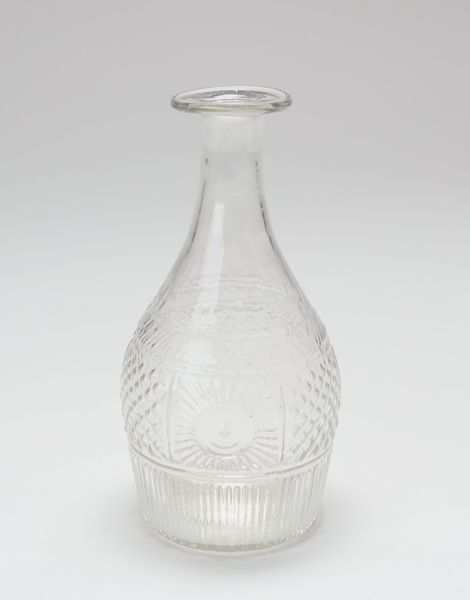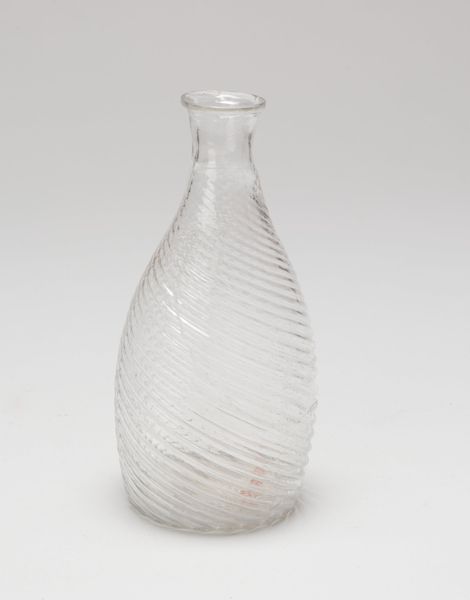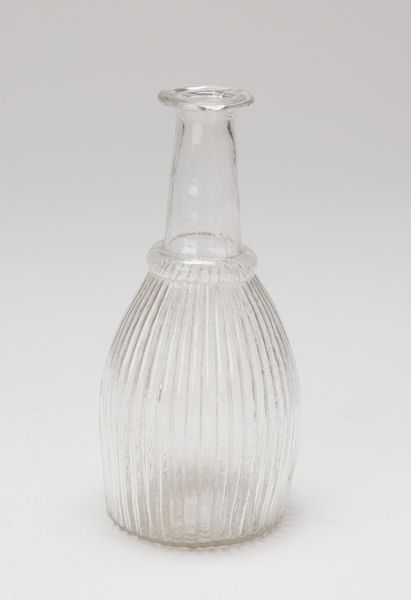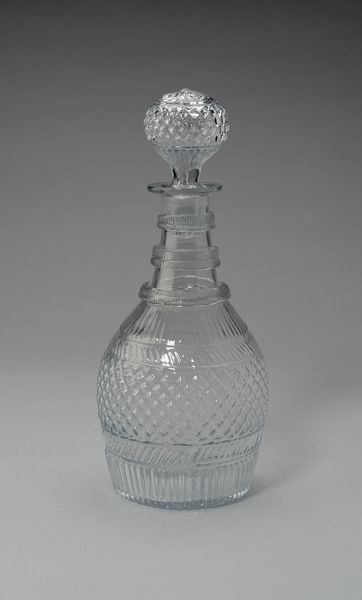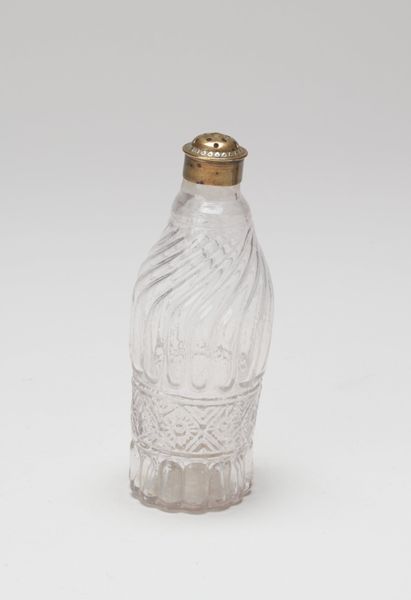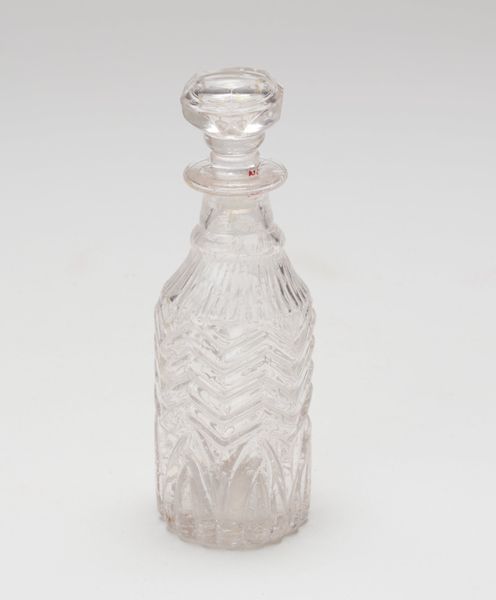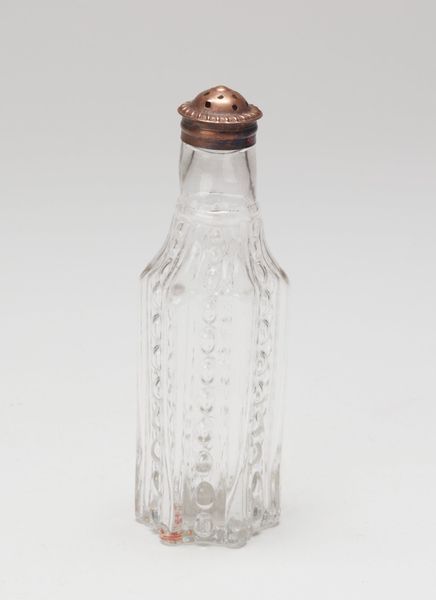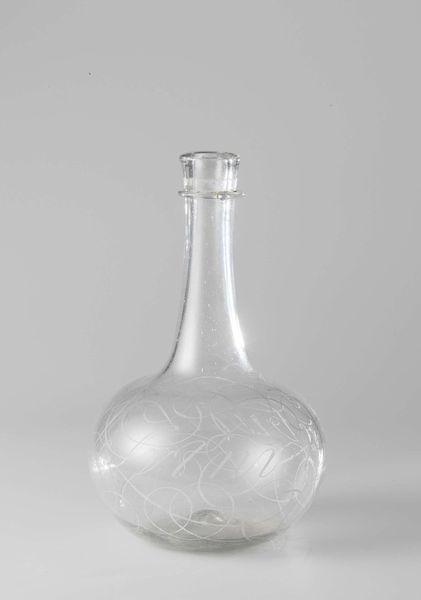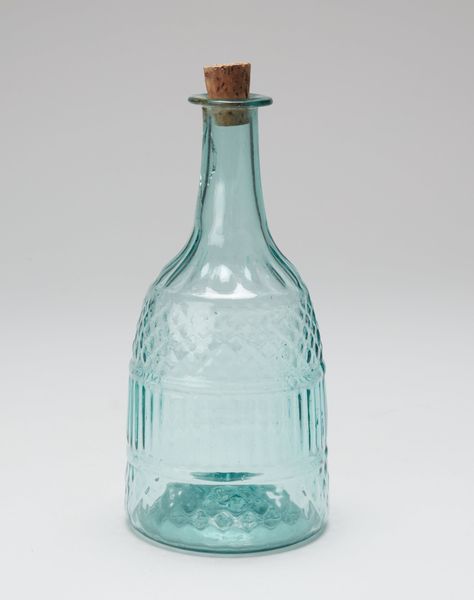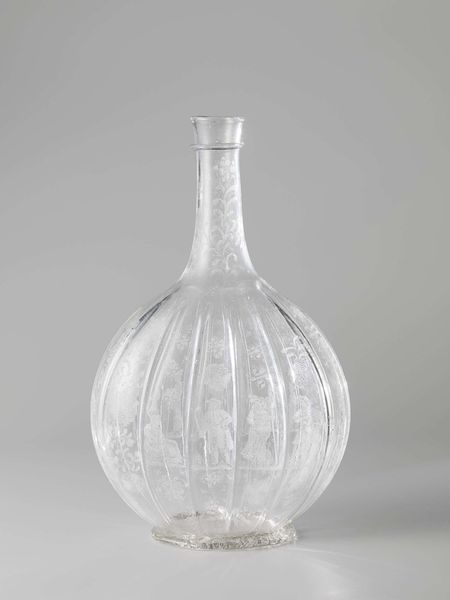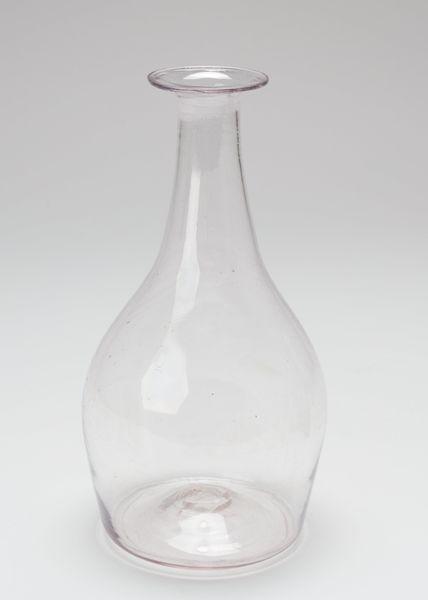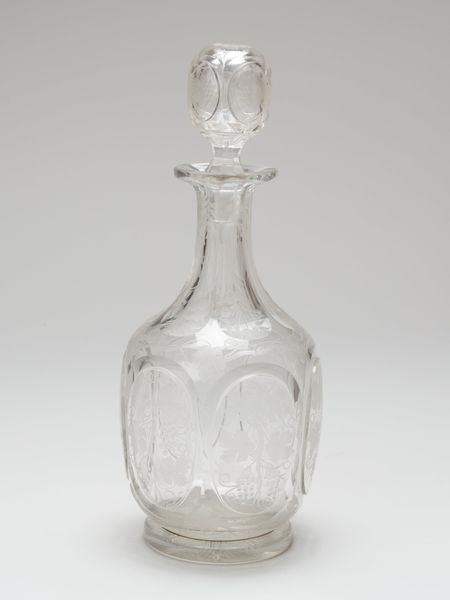
glass
#
glass
Dimensions: 7 3/4 x 3 1/4 x 3 1/4in. (19.7 x 8.3 x 8.3cm)
Copyright: Public Domain
Curator: Here we have an exquisite glass decanter, an anonymous work dating from the 18th to 19th century, currently residing at the Minneapolis Institute of Art. Editor: There’s a deceptive simplicity to it at first glance. The transparency gives it a sense of purity, but on closer inspection, the patterned glass adds depth and intricate layers. Curator: Indeed, the repetitive patterns and careful molding give it a symbolic weight beyond its practical use. Notice the distinct visual registers: linear ribs toward the base giving way to a textured middle, all surmounted by the plain, smooth neck. It reminds me of cosmological diagrams. Editor: The question is: who was invited to use it? Decanters like this certainly served the wealthy, providing a seemingly refined setting for after-dinner drinks. This would carry associations of prestige. How complicit are these objects in narratives of exclusivity and status? Curator: One can certainly explore such contextual readings, and you’re right, these items weren’t everyday objects. Yet, if you set those ideas aside, you may note how glass embodies paradoxes itself: fragility and strength; transparency and opaqueness; luxury and disposability. Glass objects like these become interesting mnemonic devices as containers, not only of spirits, but of histories and cultural aspirations. Editor: I appreciate your focus on glass itself and that inherent tension! This does carry beyond simple dichotomies of function and class. I'm prompted to consider, for example, the environmental impacts of its production and the inequalities that often accompany these types of specialized artisan economies. Curator: It is this resonance and complexity that captures the imagination. As we have noted, this "Decanter" is more than simply a container; it invites layered contemplation, an opening for numerous discourses to surface. Editor: It's fascinating how a seemingly simple vessel like this can reveal a multitude of perspectives about our past and its continuing presence in our material culture.
Comments
No comments
Be the first to comment and join the conversation on the ultimate creative platform.
